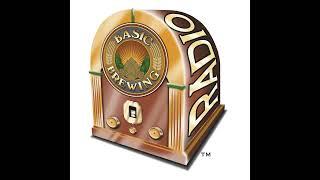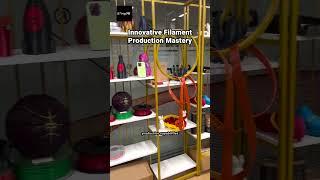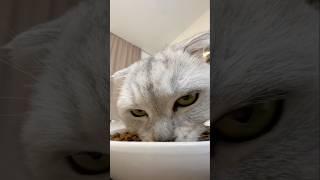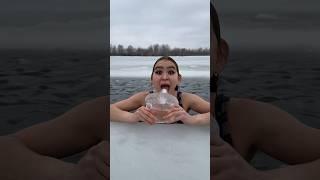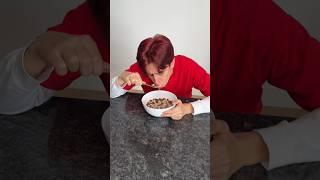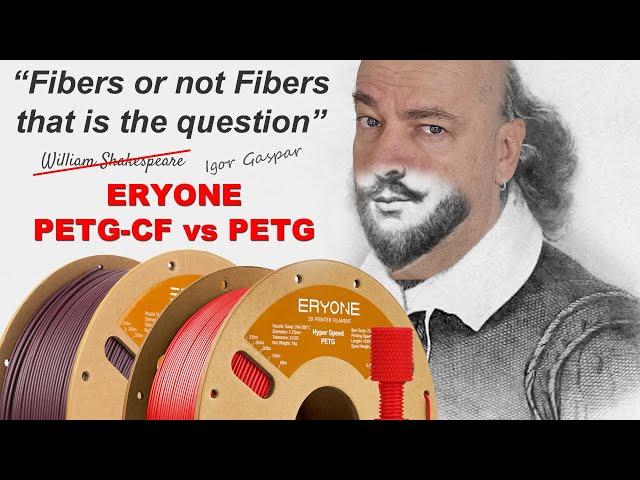
On the test: Eryone PETG vs PETG-CF (carbon fiber) 3D printing filaments
Комментарии:

PETG-CF has one major advantage for my use cases: it sticks better with superglue. Matte finish is another one, but not unique because there are PETG matte filaments available without CF.
Ответить
Much Love for your videos Igor! 🙂 👍
Ответить
Danke!
Ответить
I am very interested about the higher Nozzle temp affecting the layer adhesion
Ответить
the cross-section of the CF is wild! it looks much more solid, the walls are hardly visible at all.
Ответить
Great review, suprising to see the same layer adhesion.
Shame you didn't verify Eryone's claim of drying the filament before sealing it, since most just seal it right away.

Mine came sopping wet and needed a good 12 hours of drying at 50c.
It was stringing like crazy before hand.
Now it's dry and I've upped the retraction it prints beautifully.

Thanks, I like your testing 👍🫡
Ответить
Petg cf performs even better than in this test if you get a higher quality brand and use an enclosure holding about 35c. I've printed most major and even amazon brands hundreds of times. IMHO it is the best all around filament there is on the market. Print it hotter and in an enclosure and the layer adhesion will be better than pla. My personal favorites were atomic and phaetus.
Ответить
Would the similarities in layer adhesion mean that it is a lower percentage of carbon fibers?
Thinner carbon fibers?

Again, again, and again... low grade CF filaments are only comes to my option when i want something matte, slightly roughish surface. I wish there would be a PETG like that without the abrasive "feature"
Ответить
Hello Igor, does your university or department do food safety tests like in your past videos for 3rd partys and/or companies within Europe?
I am trying to develop a somewhat affordable approach to food safe 3d printing process and could use services

Eryone❤❤
Ответить
Now I'm curious about unfilled PET. For now, the only one I can find is FormFutura EasyFil PET. I think it should be inexpensive to manufacture, so this seems like an untapped market, assuming the only barrier to printability was nozzle/bed/chamber temperature.
Ответить
To sum up PETG CF is not worth extra money
Ответить
At this color, there is no chance there is enough CF in this stuff. It's just petg.
Ответить
The scientific way you analyze each filament is appreciated. Per your results both are good filaments. Personally I want to try the carbon fiber filament based on the visible finish on the printed parts. It’s nice to know it will perform similar to the regular petg.
Ответить
Please test warping. Big benefit of CF filled materials is less warping, so it would be interesting to compare.
Ответить
Oh nice! I use Eryone PETG-CF and Extrudr PETG-CF regulary. I'm looking forward to your results!
Ответить
Good luck with the thumbnail its a sterling effort.
Ответить
Damn that thumbnail is amazing😂😂
Ответить
thanks, looks like a really good engineering material :) price is also great!
Ответить
I'm just not sold on CF PETG or Nylon, I don't think the fibers are anchored into the material as good as it could be from any results I've seen, PET-CF is something else entirely though.
Ответить
Mr Igor, nice video. I see your mention that 80mm/s is roughly 6.4mm3/s flow. I’ve been searching for a formula to calculate this, but I’ve failed to find it.
Do you have a formula for this?

Thanks
Ответить
The primary reason I'd use CF with PETG is to minimize deformation/creep, which you showed well but it's still not ideal for some parts. Testing very rigid parts under load at elevated temperatures and still well below the glass transition temp might expose some interesting issues. Perhaps a simple, acrylic or foam board enclosure kept around 50C or so (such as temps often found inside an enclosed printer). This may seem redundant and take too long to be practical but the effect of creep can be surprising.
For example, I tested a horizontal bracket for a belt driven extruder design in PETG that was very strong (about ~15mm thick) and mounted on top of the original metal motor mount. A small belt from the motor went to a large pulley on the extruder and under constant tension. This would never flex at all on its own but eventually the half not supported (holding the extruder) visibly deformed enough to cause notable issues with the accuracy of the belt drive. The chamber was no higher than 40C. It was warmed up through the metal by the motor but this also had another heat sink on the bottom.
CF-PETG lasted longer and deformed about half as much but was still a problem. Only printing the same part in ABS completely avoided creep from occuring. Even PA-6 Nylon was affected but took longer and to a lesser degree (PA-12 and/or CF fill would probably be fine but I got tired of testing).

Lol the phot in the thumbnail looks like the guy is a coke head with all that white powder on his face. LMFAO
Ответить
Just got 5 rolls of PETG-CF from eryone on sale. Incredible price below 15 euro
Ответить
Algo
Ответить
CF PETG is fascinating.
Ответить
Good stuff
Ответить
I am curious if filament similar to how QIDI* makes them would help here.
Some of their CF/GF filaments are made where inly the core has CF/GF and rest is pure material, so the layer adhesion is as good as it could be, while getting most of the GF/CF in the filament.
* I realize I mention QIDI filaments a lot, but I just have an X-Max 3 printer and mostly use QIDI filaments or Prusaments, so those are the ones I know about.

Please start drying them before printing, if you don't then the tests aren't accurate.... My eryone PETG-CF came wet I know they claim to dry it before bagging but you don't know how long it's been sat in storage and it can still absorb moisture through the bag.... it also prints a lot better and is stronger when dried properly
Ответить
I wish I could sub to this channel over and over.
Ответить
try testing kexcelled3d filaments. according to their data they are insanely strong.
Ответить
im unsure if it will have a difference in all the tests, but Eryone PETG-CF really needs to be dried before use. this comes from a person who NEVER dry spools normaly.
and the Cf one in the video looks a lot like the my prints before drying the PETG-CF.
also I got better prints with 255 temp.

Would it be possible that annealing helps the PETG-CF to improve the Layer adhesion? Or at least better the HDT?
Ответить
My offer still stands to send you a couple spools of the new Fiberon filaments. I don’t work for them or anything and will be purchasing the filament myself. I’d just like to see you put these Fiberon Filaments through there paces.
Ответить
Could you invest a short video on your thinking around the risks / concerns with printing CF or GF filament? A different channel raised reasonable sounding concerns re: aerosolizing CF/GF fragments while printing, and the risk embedding CF in your skin if you handle CF filaments often.
I suspect you have a rich and technical perspective on these risks (I cannot tell if I should take them seriously or not)

Spreading information: Please seal the petg-cf after printing with clear coat or something. Carbon fibert will get embeded in your skin if touched.
Ответить
Interesting to see what will happen at higher temps! 😊
Ответить
Thank you for your info. :)
Ответить
rare case of thorough testing procedure, so much better than other popular channels
Ответить
Let's help this man reach 100K subs. He deserves it for the great content and all the time invested in his tests.
Ответить
I have some rolls of Eryone PETG-CF and many issues when printing it... gotta go with extrusion rates around 0,85 and i have massive filament buildup on the nozzle as well as overhangs curling up like crazy. would love to see some advise
Ответить
PETG-CF is amazing to get beautiful prints with almost entirely hidden layer lines. It has very few downsides and has added temperature resistance. The best brands my friends and I have used are Tinmorry, Eryone, IEMAI, and Voxelab/Flashforge. It's also easier to print than PETG overall in our experience.
Ответить
when testing level adhesion, can your test print have zones of different print temperatures, and wherever the test piece breaks may indicate the weakest temperature zone, or will that be inconsistant because of test shape/length?
Ответить
Egor please could you start to include dimensional stability testing? Warping properties are extremely important for larger parts. I had been using Tinmorry PETG-CF but I recently changed over to the Eryone version as it is 20% cheaper (at my location). I discovered that you can print at a considerably lower temp whilst keeping the bed temp high. I used 220C for the Eryone PETG-CF and the layer adhesion was very good. I hope the dimensional stability will be good with the lower print temperature. I highly recommend the e3D high flow Bambu hotend if you have not tried one yet because it allows for much lower print temperatures whilst retaining good layer adhesion. I used to use a Trianglelabs PCD high flow (CHT 3 hole style) in my Bambu X1 but the e3D version is pre assembled and much cheaper. I think it's a really good upgrade for layer adhesion and possibly reducing warping. I have not tested it yet but going from 250C to 220C is quite a lot and at 220C the layer adhesion was very good. Maybe you could test it?
Ответить
I’ve had bad luck with Eryone
Ответить
God damn it, you supposedly have a Doctorate of some sort, but you STILL fail to eliminate variables like pigment.
Why? Why do you do this useless testing, when you're allowing too many variables to come into your test? Why do you refuse to control for variables like pigment?
Nothing you publish or document is valid, due to the uncontrolled variables.







